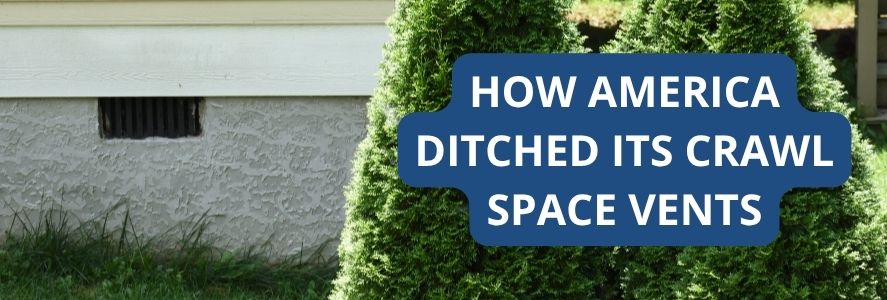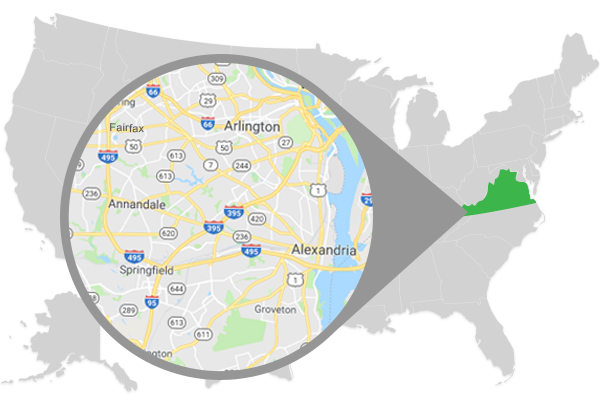How America Ditched Its Crawl Space Vents

Have you ever wondered why so many homes, especially older ones, come with massive vents to the outside in the crawl space, when they just need to be sealed up anyways? The culprit is antiquated building codes, but the codes weren’t changed until the 2000s, leaving behind plenty of homes with crawl spaces that need to be sealed off. That’s where we come in. Summit Waterproofing Solutions offers crawl space vent sealing services as well as crawl space encapsulation services in the Northern Virginia areas of Alexandria, Arlington, Fairfax, and Fredericksburg. Contact us today to get started with a FREE estimate today at 703-291-1516!
Why Crawl Space Vents Were Originally Implemented
Crawl space vents were originally implemented to prevent the buildup of moisture, as back then the prevailing belief was that open air circulation via large, open vents would allow humid air to escape the crawl space, which would dry out condensation, groundwater seepage,and plumbing leaks. Crawl space vents were thought to prevent mold, dry rot, and structural damage.
Why Crawl Space Vents Were a Bad Idea (in Hindsight)
Crawl space vents were a bad idea in hindsight, because building developers did not yet understand that ventilation from the outdoors brings in moisture as well as air, especially in humid climates. When humid air from the outside condenses on cooler crawl space surfaces, it can worsen mold growth and wood rot, and even attract termites.
Crawl space vents were also a bad idea because they didn’t take into account the Stack Effect, which pulls outside air into the crawl space and sends it upwards into the living area. This can reduce the efficacy of your HVAC system, making your home harder to cool in the summer and harder to warm in the winter. The stack effect will also send air containing mold spores and allergens from the vented crawl space up to the living area, which can negatively affect indoor air quality, especially for allergy and asthma sufferers.
The Shift Toward Sealing Crawl Spaces
During the early 2000’s, building codes began shifting toward allowing and encouraging unvented, sealed crawl spaces, as long as the home had other moisture control measures in place, like vapor barriers, insulation, dehumidifiers, and more. This process is called a crawl space encapsulation, and it’s widely used today to prevent and control moisture accumulation inside the crawl space.
Benefits of Sealing Crawl Space Vents and Encapsulating
Getting your crawl space vents sealed and your crawl space encapsulated can stop humid air from entering from the outside, which can reduce the risk of mold and mildew growth inside the crawl space. Additionally, crawl space encapsulation can improve both energy efficiency and indoor air quality. Sealing your crawl space off from humid air and moisture can protect structural elements like joists and subfloors, while also creating a conditioned space that protects plumbing and HVAC ducts.
Why Vent Plugs Alone Aren’t Enough
Simply plugging or closing crawl space vents without additional measures can trap moisture inside. That’s why full encapsulation is now recommended. A crawl space encapsulation includes:
- Sealed vapor barrier on the floor and walls.
- Sump pump and/or French drain to manage water intrusion.
- Dehumidifier or conditioned air supply to manage humidity.
- Insulation on foundation walls (instead of subfloor)
Crawl Space Encapsulation Services in Alexandria, Arlington, Fairfax, and Fredericksburg
If you need your crawl space vents sealed and your crawl space encapsulated in the Northern Virginia areas of Alexandria, Arlington, Fairfax, and Fredericksburg, contact the experts at Summit Waterproofing Solutions. We offer FREE estimates, so call us today to get started at 703-291-1516!





